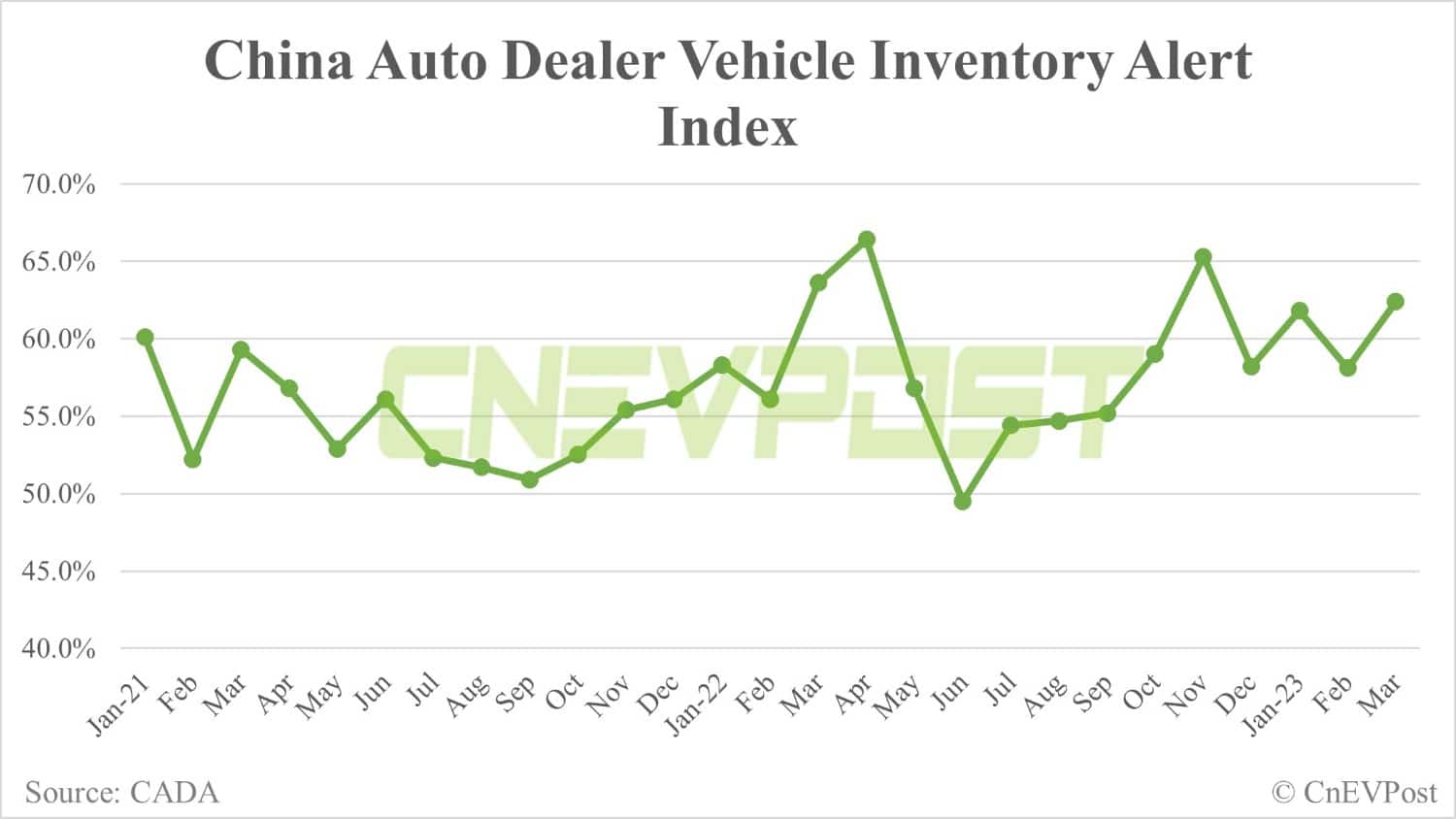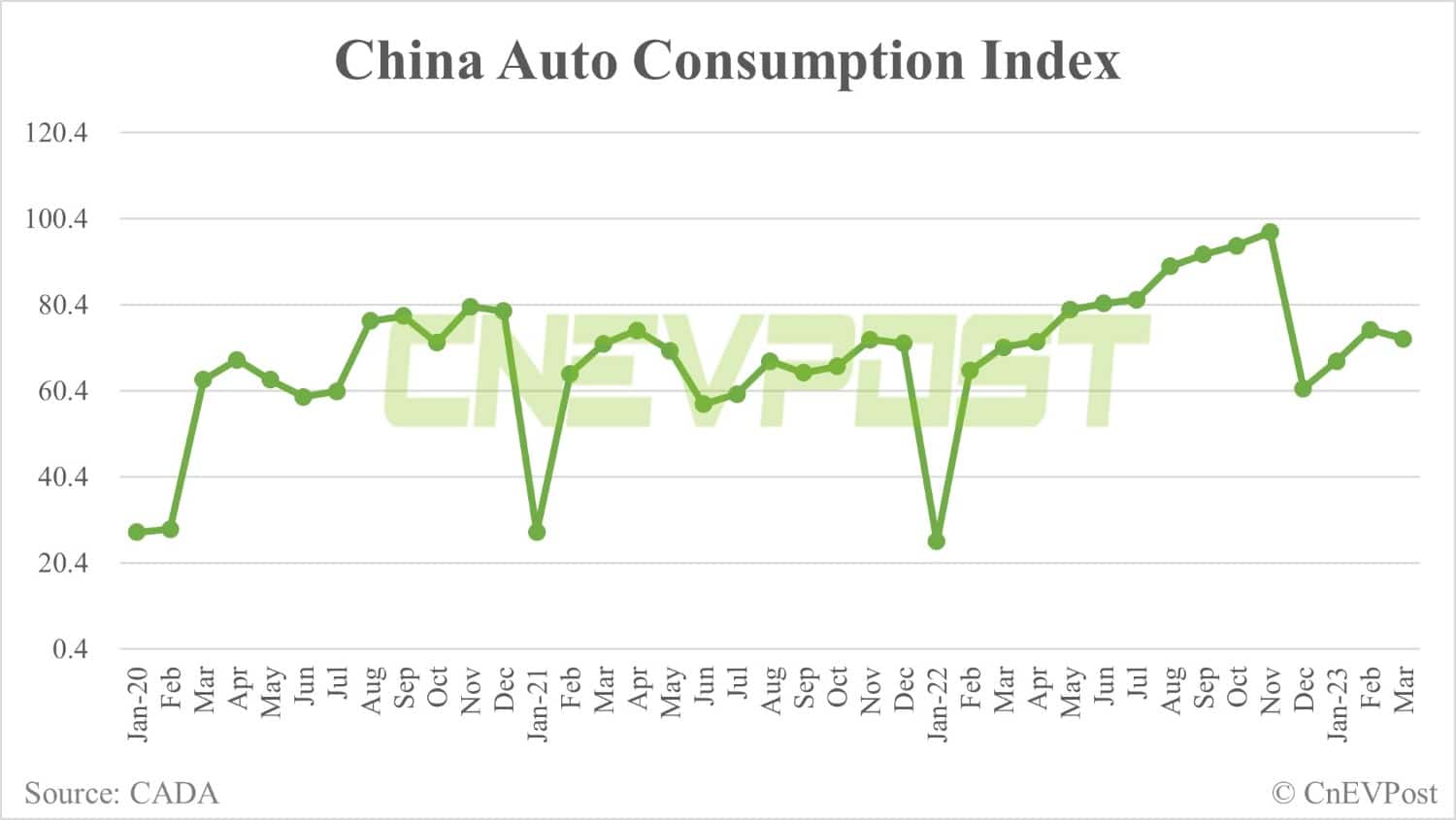With consumers in a wait-and-see mood, orders and transaction rates did not increase significantly, and auto demand recovered less than expected, the CADA said.
Many automakers in China launched rare price wars in March to try to boost sales. But these moves do not seem to have achieved the results they wanted.
In March, following significant promotions by automakers in Hubei province, dozens of provinces and cities, including Beijing, Tianjin, Shanghai and Zhejiang, offered deals that gave dealership store traffic a quick boost, the China Automobile Dealers Association (CADA) said in an April 3 report.
However, orders and transaction rates did not increase significantly as consumers were in a wait-and-see mood, and auto consumer demand did not recover as expected, the CADA said.
The Vehicle Inventory Alert Index for China's auto market was 62.4 percent in March, down 1.2 percentage points from a year ago but up 4.3 percentage points from February, according to the CADA report.
The index's break-even value is 50 percent, and a reading above that benchmark means the auto distribution industry is in contraction territory, according to the report.
China's switch to the 6b emissions standard was not the main reason for the wave of price cuts, the CADA said, adding that most dealers said their inventories of 6a-based vehicles are not high and could be cleared by the end of June.
However, there are still a large number of 6b-based vehicles that do not meet RDE (real-world driving emission) standards, and with lower-than-expected sales in the first quarter, these vehicles face challenges in completing inventory clearance by the end of June, the CADA said.
In March, vehicle prices were volatile and customer wait-and-see sentiment was strong, resulting in lower orders and turnover rates and a decline in dealer profitability, according to the report.
More than 60 percent of dealers said they met less than 80 percent of their sales targets in the first quarter. Of those, 20.5 percent of dealers achieved 70-80 percent of their sales targets and 46.0 percent achieved less than 70 percent, the CADA said.
Separately, the CADA said in another report on April 3 that the March auto consumption index was 72.5, down from 74.6 percent in February.
March auto sales did not meet expectations, and dealers predict that without major policy changes in April, auto sales will be essentially unchanged from March, the CADA said.
In March, the demand sub-index of the auto consumption index was 68.2, down from 73.3 in February, the CADA said, adding that this signals a decline in demand for cars in April.



